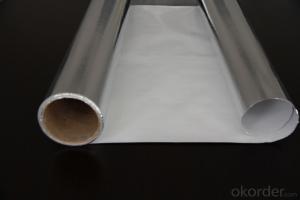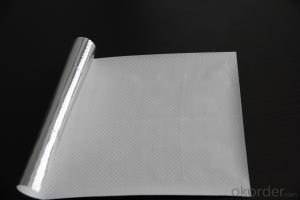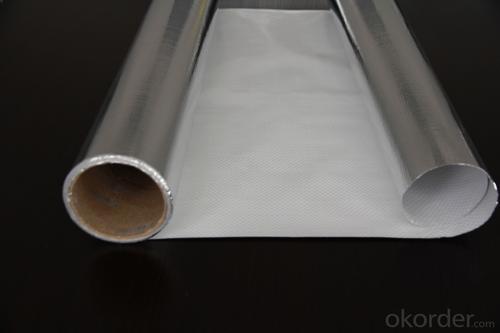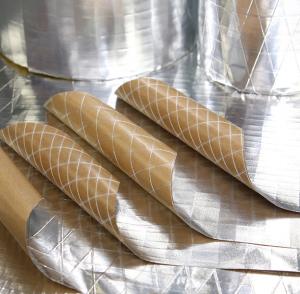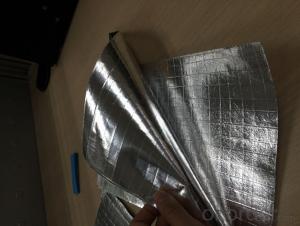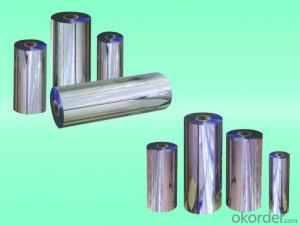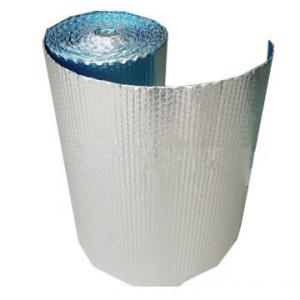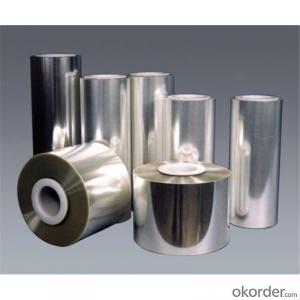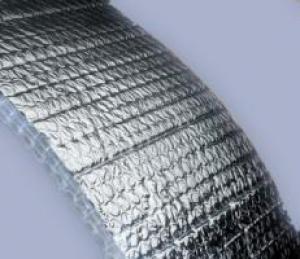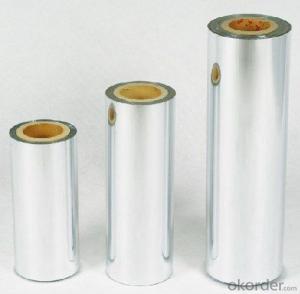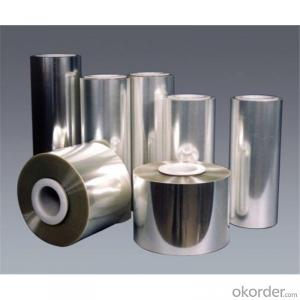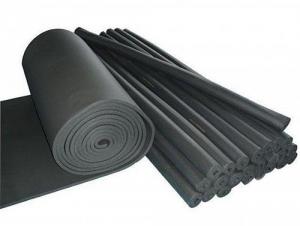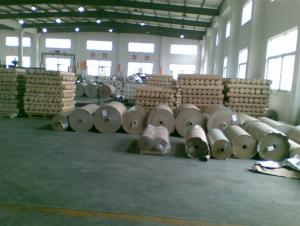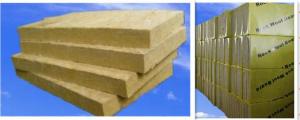Aluminum Foil Facing Metalized PET Woven Cloth
- Loading Port:
- China Main Port
- Payment Terms:
- TT or LC
- Min Order Qty:
- 5000 m²
- Supply Capability:
- 800000 m²/month
OKorder Service Pledge
OKorder Financial Service
You Might Also Like
Introduction of Aluminum Foil Facing
Aluminum Foil Facing is a kind of film, which is made of by the aluminum foil, fiberglass scrim and Kraft paper. Someone is made of by aluminum and PE woven fabric cloth.
Application of Aluminum Foil Facing
Our aluminum foil facing are mainly used as facing for glass wool insulation, rockwool, mineral wool etc. Also aluminum foil facing is used under roof decking, under attic rafters, over existing attic thermal insulation, in floors, walls and crawl spaces, and in industrial and commercial buildings to block radiant heat coming into house through the roof during the summer and retain indoor heat generated during in winter
Advantage of Aluminum Foil Facing
Light weight
• High manufacturing accuracy
• High strength
• Small inertia resistance
• Strong heat dissipation ability
• Good visual effect
• High reflective insulation
• Heat resistant, water proof, stable at high temperature;
• environmentally friendly, no smell and not-toxic;
• Smooth and clear surface;
Packing of Aluminum Foil Facing
1. Waterproof paper then PVC shrinking Film
2. Kraft paper only
3. Woven cloth
4. Kraft paper or Water Proof Film then Metal/wooden pallet
5. (Also as your request. )
Pictures of Aluminum Foil Facing
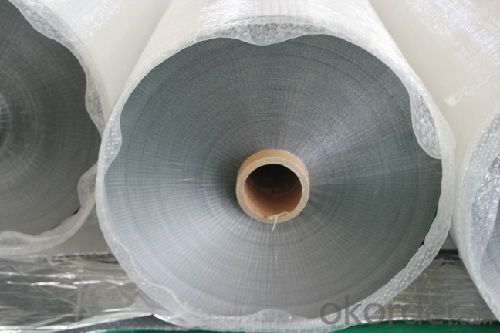
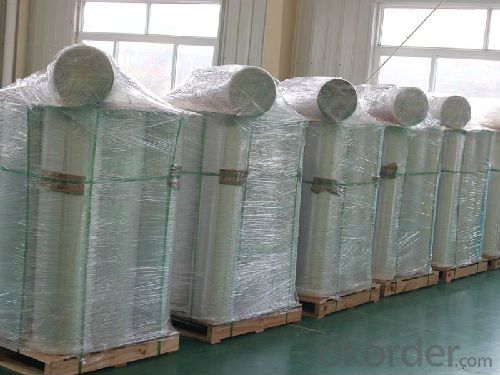
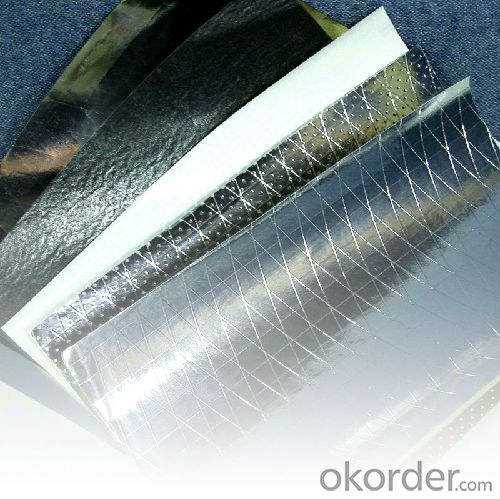
Specification of Aluminum Foil Facing
PROPERTIES | UNIT | VALUE | TEST METHOD | |||||
Basic weight | gsm | 95 | ASTM D646 | |||||
Tensile strength: M. D. X. D. | N/25mm | 350 350 | ASTM C1136 | |||||
Burst strength | N | 140 | ASTM D774 | |||||
Reflectivity of foil surface | % | 95 | ---------- | |||||
Remarks:
1. The data above are typical results and subject to change without notice.
2. Tolerance: Weight and Thickness: ±10%; Width: ±3mm;
Length: Cut Roll & Log Roll ±0.3m, Jumbo Roll ±0.5%.
3. The products should be stored at room temperature and kept from wet and heat source.
4. It is essential, as with all pressure-sensitive tapes, that the surface to which the tape is applied must be clean, dry, and free of grease and oil.
5. The user should take test and do trial-application on the above products before coming into application so as to witness and ensure suitability for user’s special purpose and technique.
FAQ
We have organized several common questions for our clients,may help you sincerely:
1. How about your company?
A world class manufacturer & supplier of Aluminum Foil Facing and is one of the large-scale professional investment Aluminum Foil Facing bases in China. Annually more than 1000 containers of Aluminum Foil Facing are exported to markets in Europe, America and Japan.
2. What is the storage condition?
The Aluminum Foil Facing should be stored at room temperature and kept from wet and heat source.
3. How to guarantee the quality of the products?
We have established the international advanced quality management system,every link from raw material to final product we have strict quality test;We resolutely put an end to unqualified products flowing into the market. At the same time, we will provide necessary follow-up service assurance.
4. How long can we receive the product after purchase?
In the purchase of product within four working days, we will arrange the factory delivery as soon as possible. The specific time of receiving is related to the state and position of customers. Commonly 7 to 10 working days can be served.
- Q: What are the methods to prevent grease stains on aluminum foil after using it for cooking?
- <p>To avoid grease stains on your aluminum foil facing after cooking, consider the following tips: Use a double layer of foil to increase protection, ensuring the foil is large enough to fully cover the cooking surface. Preheat your foil before placing it on the cooking surface to reduce the chance of grease sticking. Clean the foil immediately after use with warm soapy water to remove any grease before it sets. Alternatively, you can use non-stick spray or a light coating of oil on the foil before using it, which can help prevent grease from adhering.</p>
- Q: What are the methods to prevent aluminum foil from shedding into food during cooking?
- <p>To avoid metal flakes from aluminum foil getting into your food, first ensure you're using heavy-duty aluminum foil, which is less likely to tear. Avoid using foil for acidic or highly acidic foods as they can cause the foil to break down. When handling foil, use utensils instead of your hands to prevent oils and salts from your skin causing the foil to flake. Also, do not use foil in broiling or high-heat situations as it can cause the foil to break down and release flakes. Finally, consider using parchment paper or silicone baking mats as alternatives to aluminum foil for certain recipes.</p>
- Q: This question asks for methods to properly store aluminum foil to ensure its longevity.
- <p>To store aluminum foil properly and make it last longer, keep it in a cool, dry place away from direct sunlight. Use a foil container or a resealable plastic bag to store it. Avoid stacking heavy items on top of it to prevent crushing. When using, always cut the foil from the end to minimize exposure to air, which can cause it to oxidize and weaken. Additionally, you can use a paper towel to wipe the foil before storing to remove any food particles that might cause it to stick together or degrade in quality.</p>
- Q: This question asks for effective methods to clean aluminum foil facing that has become sticky or dirty, which is a common issue in kitchens.
- <p>To clean a sticky or dirty aluminum foil facing, start by removing any excess residue with a scraper or a plastic spatula. Then, mix a solution of warm water and dish soap, and gently scrub the surface with a soft cloth or sponge. Avoid abrasive materials that could scratch the surface. For stubborn stains, you can use a mixture of baking soda and water to create a paste, apply it to the area, and let it sit for a few minutes before scrubbing. Always rinse thoroughly and dry the surface to prevent further sticking. Regular cleaning can help maintain the cleanliness and functionality of your aluminum foil facing.</p>
- Q: This question asks for the correct method of wrapping food in aluminum foil, ensuring the shiny side faces outward.
- <p>To properly wrap food with aluminum foil, first ensure the shiny side of the foil faces outward. This side is non-stick and prevents food from sticking to the foil. Place the food in the center of a piece of foil large enough to cover it completely. Bring the edges of the foil together over the food, then fold and crimp the edges to seal tightly, creating a sealed pouch. This will help retain moisture and heat, and keep the food from sticking to the foil.</p>
- Q: What are the various uses of aluminum foil facing across different sectors?
- <p>Aluminum foil facing is widely used across various industries due to its properties such as heat resistance, moisture barrier, and durability. In construction, it's used for insulation and moisture protection in walls and roofs. In the food industry, it's essential for packaging to preserve freshness and extend shelf life. In the automotive sector, it's used for heat shielding and soundproofing. Additionally, it's utilized in aerospace for lightweighting and heat protection, and in pharmaceuticals for blister packaging. Its versatility makes it indispensable in many manufacturing processes and product applications.</p>
- Q: This question asks for advice on how to use aluminum foil effectively in the kitchen.
- <p>Using aluminum foil efficiently in the kitchen can save time and resources. Here are some tips: 1. Pre-cut and store: Keep a roll of aluminum foil in the kitchen and pre-cut pieces for quick use. 2. Double layer for insulation: Use a double layer for wrapping food to retain heat and keep food warm for longer. 3. Line baking sheets: Line baking sheets with foil to prevent sticking and make cleanup easier. 4. Cover dishes: Use foil to cover dishes in the oven to prevent over-browning. 5. Use for grilling: Wrap vegetables or fish in foil for easy, mess-free grilling. 6. Reuse: Reuse aluminum foil for multiple tasks to minimize waste. 7. Avoid overuse: Use only as much foil as needed to prevent unnecessary waste. 8. Recycle: Always recycle aluminum foil after use to contribute to sustainability.</p>
- Q: Is it possible to replace plastic wrap with aluminum foil for food storage in containers?
- <p>Yes, aluminum foil can be used as a substitute for plastic wrap in food storage containers. It effectively seals in freshness and prevents air exposure, which is similar to the function of plastic wrap. However, aluminum foil is not airtight and may not be as effective in preventing the escape of odors or the entry of bacteria as plastic wrap. Additionally, it is not microwave-safe and can be less convenient for re-sealing. It's also important to ensure that the foil does not come into direct contact with acidic or alkaline foods, as this can lead to a reaction and potential contamination.</p>
- Q: Describe the most effective methods for utilizing aluminum foil in baking processes.
- <p>The best way to use aluminum foil in baking involves lining the baking sheet to prevent food from sticking and to simplify cleanup. Preheat the foil by placing it on the sheet and heating the oven before putting in the food. For even cooking, ensure the foil doesn't touch the heating elements. Use foil to wrap foods like potatoes or fish for steaming, or create packets for en papillote cooking. When using foil to cover food, tent it loosely to allow for air circulation. For browning, remove the foil during the last part of baking. Always handle with care to avoid tearing and ensure椋熷搧瀹夊叏.</p>
- Q: Is it possible to use aluminum foil with a reflective side to create a wrap for outdoor eating purposes?
- <p>Yes, you can use aluminum foil facing to make a wrap for eating outdoors. Aluminum foil is a versatile material that can be used to wrap food for various purposes, including outdoor dining. The reflective side can help keep the food warm or cool, depending on the situation. However, it's important to ensure that the foil does not come into direct contact with the food, especially if it's acidic or high in salt, as this can cause the foil to break down and potentially contaminate the food. Use the foil as a barrier or layer between the food and other surfaces to maintain hygiene and椋熷搧瀹夊叏.</p>
Send your message to us
Aluminum Foil Facing Metalized PET Woven Cloth
- Loading Port:
- China Main Port
- Payment Terms:
- TT or LC
- Min Order Qty:
- 5000 m²
- Supply Capability:
- 800000 m²/month
OKorder Service Pledge
OKorder Financial Service
Similar products
Hot products
Hot Searches
Related keywords
